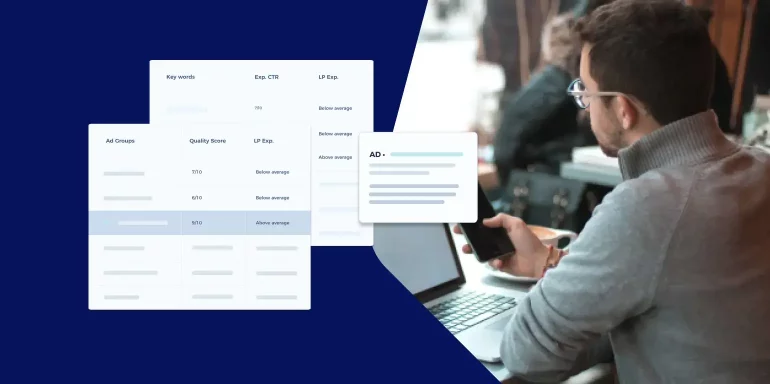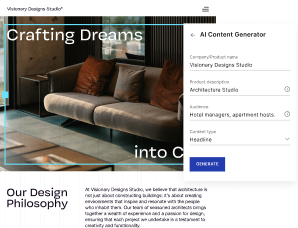Paid search advertising is one of the most popular forms of pay per click (PPC) advertising. It involves brands paying search engines to place their ads higher on relevant search engine results pages (SERPs), with the end goal of driving traffic to their landing pages.
So, how do paid search ads work, and what are paid search advertising costs? Let’s start with defining what paid search advertising is.
What is paid search advertising?
Paid advertising uses an auction-based PPC model to show digital ads on search engine results pages such as Google, Bing, and Yahoo. How often your ads appear, the rankings, and how much you pay per click—all depend on your bid and Quality Score.
To start, you bid for ad placement on SERPs by setting the maximum amount you want to spend per click (your bid) and the maximum amount you’re willing to spend on the entire campaign (your budget). Once you create an ad and connect it to a landing page, each respective search engine ad platform will calculate a Quality Score to determine its positioning. This metric is a good indicator of the relevance of your specified keywords, ads, and the destination page/landing page:
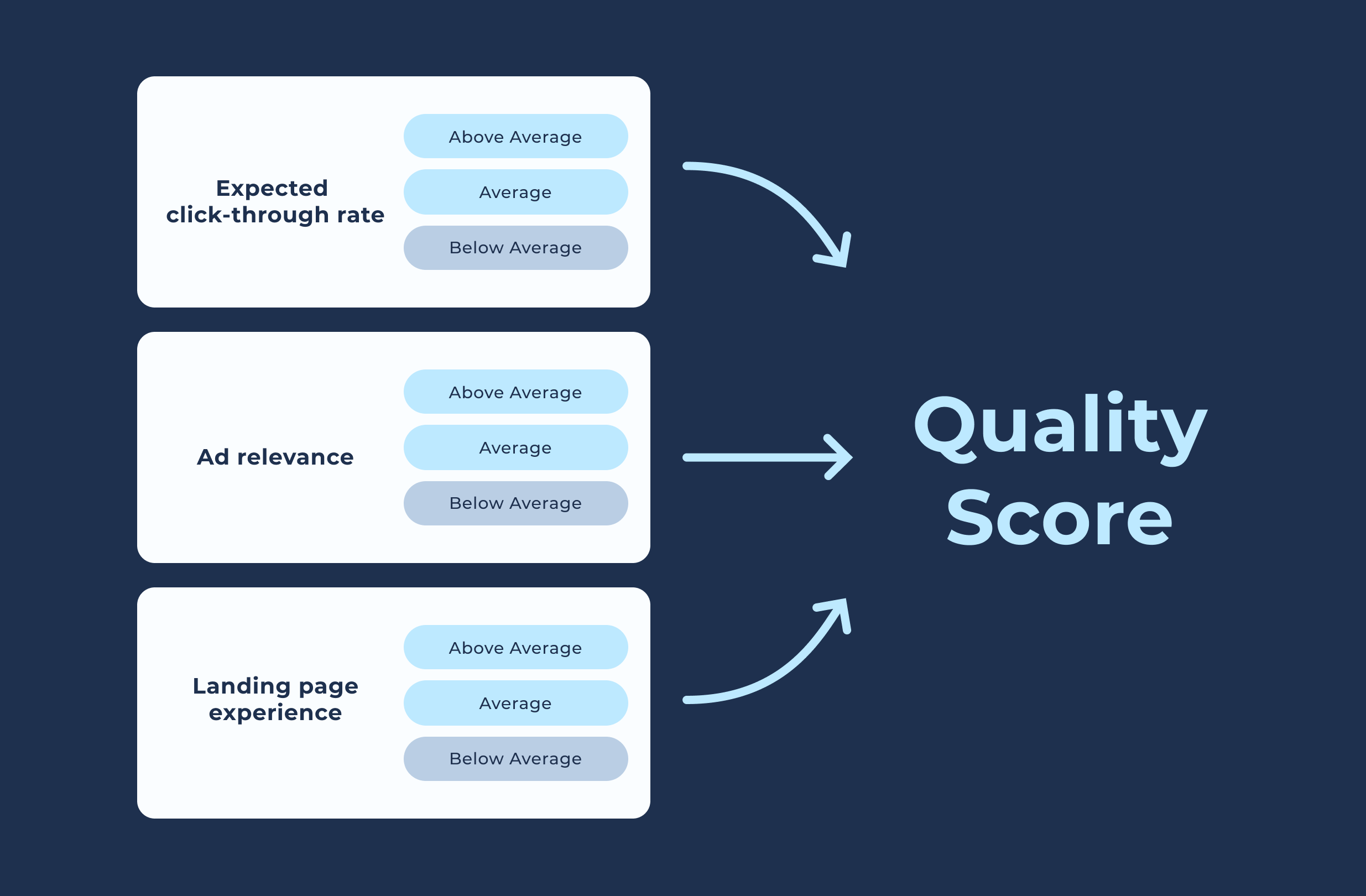
What is a paid search ad?
On major search platforms like Google, Bing, and Yahoo, paid ads are typically shown above and below organic search results. They include three main components — a headline, display URL, and description text — convincing users to click. Apple Search Ads show above the App Store search results on both the iPhone and iPad. Text ads can also include extensions to expand your ad with additional information.
Headline
The ad headline is the first copy viewers will notice because it has the largest text. Here, it’s important to incorporate relevant keywords to draw more attention from high-intent searchers. The three major search engines allow
two headlines, each up to 30 characters (however, on Yahoo, if you choose only one headline, the character limit is 50).
This Google search for “easy social media management” presented this Simplified ad:
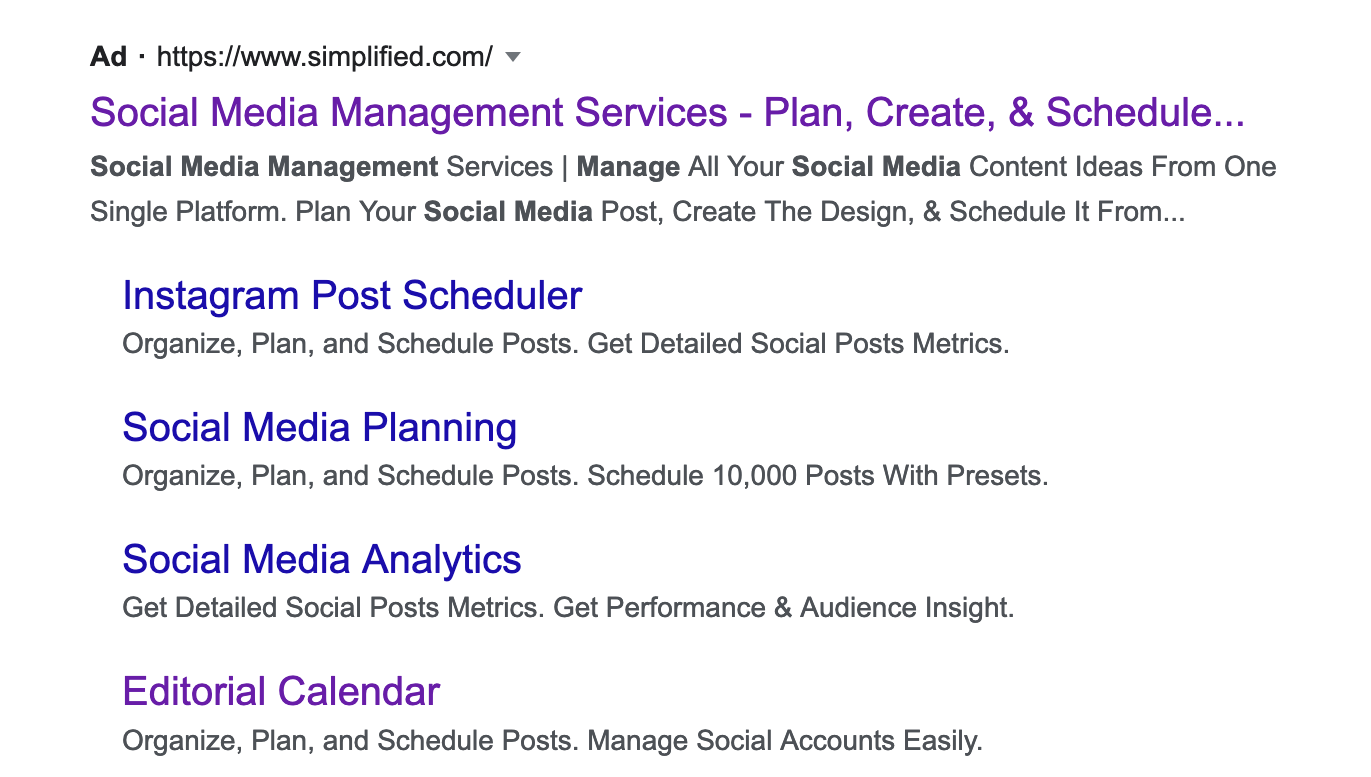
Notice how the second ad’s headline is more optimized than the first? This version is more relevant to the search query (with the entire search phrase in the title), and it contains two calls to action (“learn” and “get started”).
Display URL
The display URL shows your website address in green directly underneath the headline. It comprises the domain from your final URL, plus optional subdomain and path fields to provide searchers more clarity on where they’ll arrive once they click.
Display URLs each contain up to 35 characters. One primary difference, though, is that Bing display URLs are bold:

Description text
Description text helps highlight the most important details about your product or service and why search users should click through. Google Ads and Bing Ads allow up to 80 characters of description text, while Yahoo allows up to 150 characters.
Grin’s Yahoo ad takes full advantage of the 150 character limit, with the ad copy highlighting their product features:
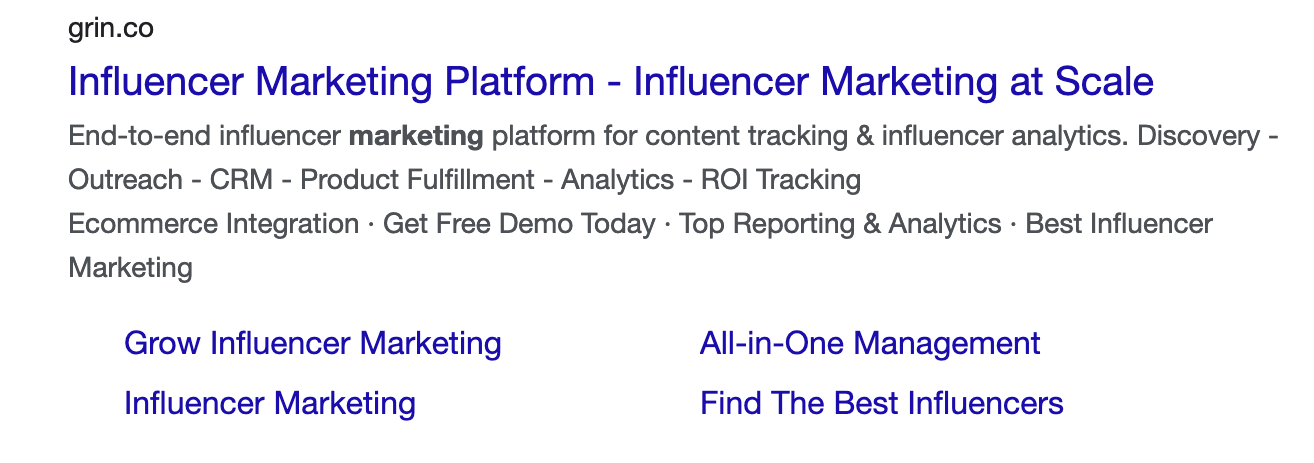
Ad extensions
Ad extensions effectively allow your message to take up more space in the results list. Capitalizing on this can make a big impact, considering space is extremely limited.
These add-ons enable digital advertisers to provide more information about their product or service — such as location, phone number, or additional deep links. Formats include location information and maps, click-to-call buttons, reviews, sitelink extensions, and more. Not only do they increase your ad’s visibility, but Google reports ads’ click-through-rate increases several percentage points, too.
Here we see Gleap’s Google ad with two sitelink extensions–one to their pricing page and one to their 14-day free trial:
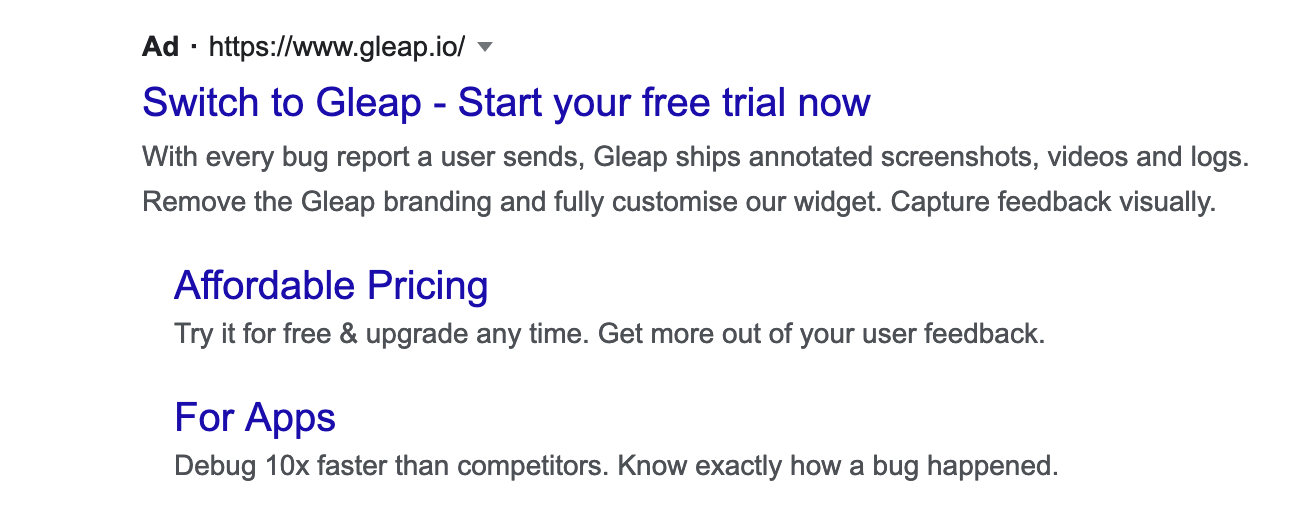
Benefits of paid search marketing
1. More visibility
Optimizing your site organically could eventually get your brand to the top of search results, but paid search advertising can get you there immediately. Whether you’re a small startup business trying to build your online presence, or a large organization with an already existing reputation, paid ads are key to quickly getting in front of high-intent search prospects.
2. More traffic
Your page traffic may eventually increase from organic optimizations. Yet, there is hardly any waiting involved to see a bump in traffic when paid ads are in effect. This is especially true for newer companies attempting to get their name out in the market, and companies targeting specific organic terms that they aren’t currently ranking for.
3. Highly interested prospects
Since paid search ads target specific search queries, people who see your ads were already searching for a solution like yours. They’re not just arbitrarily surfing the web; rather, they’re likely interested in evaluating your product or service, either now or in the near future.
4. Detailed analytics
Search engines like the big three provide marketers with free real-time data and analytics, enabling you to learn about your campaigns and prospects, and see exactly what you’re getting from paid search dollars. Some of the most useful analytics include:
- Where a prospect is geographically located
- What type of device they’re using to search
- What pages they visited on your site
- How much time they spent on your site
These details can help you optimize your campaigns regularly to ensure your ad dollars are being put to their best use.
Increase your conversion rates with paid search ads
There is no denying that paid search advertising can be a valuable strategy to generate brand awareness, leads, and sales. Not only do well-crafted, targeted ads increase the effectiveness of your advertising efforts, but when paired with an optimized landing page, they reach their full potential.
Instapage empowers digital advertisers to create the most effective landing pages with a designer-friendly builder, team collaboration, Instablocks™, advanced analytics, and more. Sign up for a 14-day trial.

Try the world's most advanced landing page platform with a risk-free trial.
